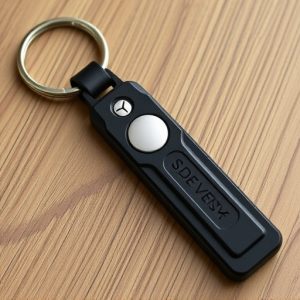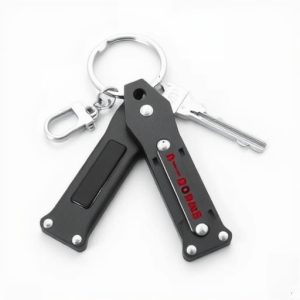Unbreakable Keychains: Navigating Legal Requirements for Consumer Safety
Unbreakable self-defense keychains, while offering peace of mind and personal safety, must adhere to…….
Unbreakable self-defense keychains, while offering peace of mind and personal safety, must adhere to regional legal requirements regarding material composition (like high-strength steel or advanced polymers), sharp edge limitations, and impact resistance. These laws vary globally, with the US and EU having distinct regulations. To ensure consumer safety, manufacturers employ rigorous quality control measures, testing for impact resistance, sharp edge retention, and overall durability, while providing clear usage instructions and warnings. Understanding both legal constraints and material properties is crucial for users and manufacturers alike to make informed decisions in diverse global markets.
In today’s world, personal safety is paramount. One innovative solution gaining traction is the unbreakable self-defense keychain—a compact tool designed for peace of mind. This article delves into the legal requirements surrounding these devices, exploring regional variations and what makes a keychain truly safe. We’ll uncover best practices to ensure consumer protection and highlight key considerations when choosing an unbreakable self-defense keychain material.
- Understanding Legal Requirements for Self-Defense Keychains
- Unbreakable Materials: What Makes a Keychain Safe?
- Regional Variations in Legislation: An Overview
- Ensuring Consumer Safety: Best Practices and Recommendations
Understanding Legal Requirements for Self-Defense Keychains
When considering an unbreakable self-defense keychain, it’s crucial to understand the legal requirements that govern its design and use. Each country and region has its own set of regulations pertaining to self-defense tools, including keychains. These laws are in place to ensure public safety and prevent misuse of such devices. For instance, some jurisdictions mandate specific materials and features that render the keychain non-lethal and less likely to cause severe injury during a defensive situation.
Keychain manufacturers often adhere to guidelines related to material composition, sharp edge limitations, and impact resistance testing. Unbreakable self-defense keychains are typically crafted from durable yet non-harmful materials such as high-strength steel or advanced polymer compounds. These materials ensure the keychain’s structural integrity while meeting legal standards for minimizing injury risk. Compliance with local laws not only safeguards users but also helps these devices gain acceptance as legitimate personal safety tools in public spaces.
Unbreakable Materials: What Makes a Keychain Safe?
When it comes to self-defense keychains, the primary concern is durability and strength—the materials used should be virtually indestructible. Unbreakable materials ensure that the keychain can withstand daily wear and tear, as well as potential situations where force might be applied. Metal alloys like stainless steel or titanium are popular choices for their resilience against breaking, bending, or rusting.
Specific elements contribute to a keychain’s safety. For instance, high-strength steel offers immense durability while maintaining a lightweight profile. Additionally, some keychains incorporate advanced materials like ceramic or polycarbonate, which are incredibly tough and resistant to shattering. These unbreakable self-defense keychains serve as reliable tools for personal safety, offering peace of mind and the assurance that your defense mechanism is as robust as it seems.
Regional Variations in Legislation: An Overview
Keychain safety devices, designed for self-defense, are subject to varying legal landscapes across regions, which can impact their availability and use. When considering an unbreakable self-defense keychain, understanding these regional variations is essential for both manufacturers and consumers. Each jurisdiction has its own set of regulations governing weapons, including small personal defense tools like keychains. Some countries have strict laws prohibiting any form of self-defense device, while others allow certain types with specific restrictions.
For instance, in the United States, state laws dictate the legality of self-defense keychain products, with some states permitting them and others banning them entirely. In contrast, European Union member states have diverse regulations, with some countries allowing defensive keychains as long as they meet certain criteria, such as force limitations and specific material compositions, like high-quality, unbreakable materials to ensure safety and minimize risk of injury. This overview highlights the need for thorough research when marketing or acquiring self-defense keychains, especially in global markets, to comply with local legal requirements.
Ensuring Consumer Safety: Best Practices and Recommendations
Ensuring consumer safety is paramount when it comes to keychain self-defense devices, especially those made from unbreakable materials. Best practices dictate that manufacturers adhere to strict quality control measures throughout the production process. This includes using only high-grade, durable metals and robust engineering designs to guarantee a product that can withstand everyday wear and potential impact scenarios without compromising integrity or functionality.
Recommendations for enhancing consumer safety include rigorous testing for impact resistance, sharp edge retention, and overall durability. Additionally, clear and concise instructions for proper usage should be provided, along with warnings about unsuitable applications or situations. By prioritizing these best practices, manufacturers can offer peace of mind to consumers who rely on their keychain self-defense devices as a means of personal safety.
When considering the legal requirements for self-defense keychains, it’s clear that choosing an unbreakable material is a vital step in ensuring consumer safety. Understanding regional variations in legislation and adhering to best practices can help manufacturers and users navigate this intricate landscape. By prioritizing robust materials like high-strength steel or ceramic, consumers can gain peace of mind, knowing their keychain is up to the task of providing protection when needed most.


